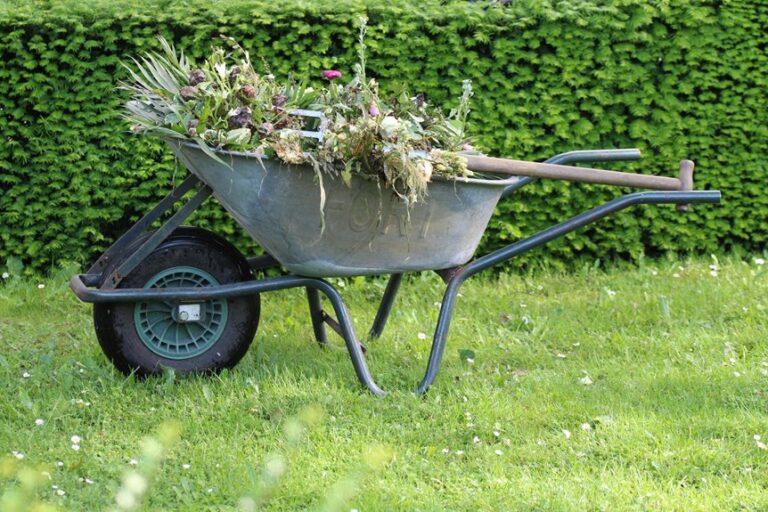
Leaf curling is a common issue that affects your American Mountain Ash trees. This curling often results from pests like woolly aphids and ash leaf curl aphids. Recent studies show that ash leaf curl aphids feed on the underside of leaves, causing them to warp and curl. Woolly aphids also induce similar damage, leading to noticeable leaf distortion. Identifying these pests is crucial for effective management and maintaining the health of your trees.
Key Takeaways
Monitor your American Mountain Ash trees regularly for signs of pests like aphids to catch issues early.
Recognize the symptoms of leaf curling, such as tightly rolled leaves and yellowing foliage, to assess tree health.
Use organic solutions like insecticidal soap or neem oil to manage aphid infestations effectively.
Understand that environmental stressors, such as drought and excessive rain, can also cause leaf curling.
Implement an integrated pest management strategy to maintain the overall health of your trees.
Causes of Curling

Leaf curling in American Mountain Ash trees can stem from various factors, primarily pests and environmental stressors. Understanding these causes helps you take appropriate action to protect your trees.
Aphids and Leaf Curl
Aphids are small, soft-bodied insects that can cause significant damage to your Mountain Ash trees. The most common species affecting these trees include ash leaf curl aphids and the Mountain Ash sawfly.
Ash Leaf Curl Aphids: These pests feed on the sap of the leaves. Their feeding behavior deprives the leaves of essential nutrients, leading to curling and thickening. You may notice tightly rolled leaves, a condition often referred to as a ‘pseudo gall’.
Mountain Ash Sawfly: The larvae of this sawfly feed in groups along leaf margins. They skeletonize the leaves, causing visible damage that can lead to further curling.
When aphid populations grow high, their sap-sucking can lead to wilting and even dieback of shoots and buds. This contributes to the curling of leaves, making it crucial to monitor your trees for signs of infestation. Additionally, the honeydew produced by aphids can attract other pests and promote the growth of sooty mold, which blocks light from reaching the tree.
Environmental Stressors
Environmental factors also play a significant role in leaf curling. Stressors such as drought, excessive rain, and severe weather can impact the health of your Mountain Ash trees. Here’s how these stressors affect them:
Environmental Stressor | Effect on Trees |
|---|---|
Drought | Major declines and even death in trees. |
Excessive Rain | Can damage trees when prolonged. |
Severe Weather (e.g., hurricanes) | Can cause branches to break off and trees to blow down. |
When trees experience drought, they may react defensively, leading to leaf curling. Similarly, excessive moisture can create conditions that stress the tree, resulting in similar symptoms. Recognizing these environmental stressors is vital for maintaining the health of your trees.
Identifying the specific cause of leaf curling is essential for effective management. Whether it’s pests like aphids or environmental stressors, early detection can help you take the necessary steps to protect your American Mountain Ash trees.
Symptoms of Ash Leaves Curling

Visual Indicators
When you observe your American Mountain Ash trees, look for specific signs that indicate leaf curling. The most recognizable symptoms include:
Leaves curling inwards due to sap extraction by aphids.
Tightly rolled leaves that may appear distorted or swollen.
Cosmetic damage that does not typically affect the overall health of the tree.
These aphid-infested leaves can create a noticeable change in the appearance of your trees. You might also see yellowing or wilting leaves, which can further signal stress. If you notice these visual indicators, it’s essential to act quickly to prevent further damage.
Impact on Tree Health
The health of your American Mountain Ash trees can decline significantly if you ignore the symptoms of leaf curling. Here’s how various conditions can affect your trees:
Disease | Symptoms and Effects |
|---|---|
Anthracnose | Causes leaf curling, reduces photosynthesis, and can lead to tree decline. |
Affects foliage, leading to irregular spots and dead areas, potentially causing twig dieback. | |
Apple Scab | Leads to leaf yellowing and premature leaf drop, which can result in a nearly bare tree by mid-July. |
Leaving leaf curling untreated can lead to weakened tree health over time. Repeated infections and stress from environmental factors can deteriorate the overall vitality of your American Mountain Ash trees. You must monitor your trees regularly and address any signs of infestation or stress promptly.
Ash Leaf Curl Aphids
Life Cycle
The life cycle of ash leaf curl aphids is fascinating and crucial for understanding their impact on your American Mountain Ash trees. These aphids typically begin their life cycle in the spring. Here’s how it unfolds:
Overwintering Eggs: The aphids lay eggs that survive the winter. These eggs hatch in April to May, just before the buds burst.
Emergence of Fundatrices: Newly-emerged fundatrices, or the first generation of aphids, feed on the fresh buds of the ash tree.
Feeding on Leaves: As the leaves develop, these aphids move to the bases and stalks of the leaves. Their feeding causes deformation and curling.
Autumn Winged Forms: In the fall, some aphids develop wings. These winged forms leave the host tree to find new locations, completing their life cycle.
Understanding this cycle helps you recognize when to monitor your trees for signs of infestation of aphids.
Feeding Habits
The feeding habits of ash leaf curl aphids significantly affect the health of your trees. They primarily feed on the underside of leaves, which leads to various issues. Here’s a summary of their feeding impact:
Source | Evidence |
|---|---|
Colorado State University | Ash leaf curl aphids feed on the underside of leaves, causing them to curl and distort. |
Aspen Arboriculture | The aphids suck out the juices from the leaves, leading to curling that provides cover for their reproduction. |
How to Manage Pests | Infested leaves curl, distort, and drop prematurely, with honeydew production leading to sooty mold. |
Leafcurl Ash Aphids | Feeding creates tightly rolled and thickened leaves, causing distortion and twisting of adjacent twigs. |
The damage from aphid feeding can lead to significant physiological stress on your American Mountain Ash trees. The curling and distortion of leaves not only affect their appearance but also reduce the tree’s ability to photosynthesize effectively. Additionally, the honeydew produced by these aphids can promote the growth of sooty mold, further harming the tree’s health.
Recognizing the signs of ash leaf curl aphids early can help you take action to protect your trees from severe damage.
Treatment for Curling Leaves
When you notice curling leaves on your American Mountain Ash trees, it’s essential to act quickly. You can choose from organic solutions or chemical treatments to manage the problem effectively.
Organic Solutions
You can use several organic methods to combat aphids and reduce curling damage from aphids. Here are some effective options:
Homemade Insecticidal Soap: This solution works by dissolving the outer coating of aphids, leading to dehydration and death.
Neem Oil: This natural oil disrupts the feeding and reproduction of aphids. Its active ingredient, azadirachtin, is particularly effective.
Worm Castings: These may contain chitinase, which can break down the exterior of aphids when ingested, helping to control their population.
Using these organic treatments not only helps manage aphids but also supports the overall health of your trees.
Chemical Treatments
If organic solutions do not yield results, consider chemical treatments. Here’s a table of recommended pesticides for controlling aphids on American Mountain Ash trees:
Pesticide Name | Active Ingredient | EPA Registration Number |
|---|---|---|
All Seasons Horticultural and Dormant Spray Oil | mineral oil | 4-80 |
R-T-U Year-Round Spray Oil | mineral oil | 6218-78 |
Safer Brand BioNEEM Multi-Purpose Insecticide | azadirachtin | 70051-6-42697 |
These chemical treatments can effectively reduce aphid populations. However, always follow the instructions on the label to ensure safety and efficacy.
In addition to these treatments, consider implementing integrated pest management strategies. Providing healthy trees, encouraging natural predators, and avoiding unnecessary insecticides can help prevent future infestations.
By taking these steps, you can effectively manage curling leaves and maintain the health of your American Mountain Ash trees.
In summary, you must recognize the signs of leaf curling in your American Mountain Ash trees. Early detection of pests like aphids is crucial for effective management. Here are some key takeaways:
Implement an integrated pest management program to maintain tree health.
Monitor your trees regularly for signs of infestation.
Affected trees usually recover from leaf curling, as damage is often cosmetic.
If you notice persistent issues, consult local experts or tree care professionals for assistance. Taking these steps will help ensure the vitality of your trees for years to come.
FAQ
What should I do if I notice curling leaves on my American Mountain Ash?
If you see curling leaves, inspect your tree for pests like aphids. Treat infestations promptly using organic or chemical solutions to prevent further damage.
How can I tell if aphids are affecting my tree?
Look for tightly rolled leaves, yellowing foliage, or sticky honeydew on the leaves. These signs indicate aphid activity on your American Mountain Ash.
Are environmental factors the only cause of leaf curling?
No, while environmental stressors like drought and excessive rain can cause curling, pests like aphids are often the primary culprits. Monitor both aspects for effective management.
Can leaf curling harm my tree’s health?
Yes, prolonged leaf curling can weaken your tree. It reduces photosynthesis and may lead to further stress or disease if left untreated.
How often should I check my American Mountain Ash for issues?
Regularly inspect your tree, especially during the growing season. Early detection of pests or stress helps maintain the health of your American Mountain Ash.



